Home • Blog
Blog
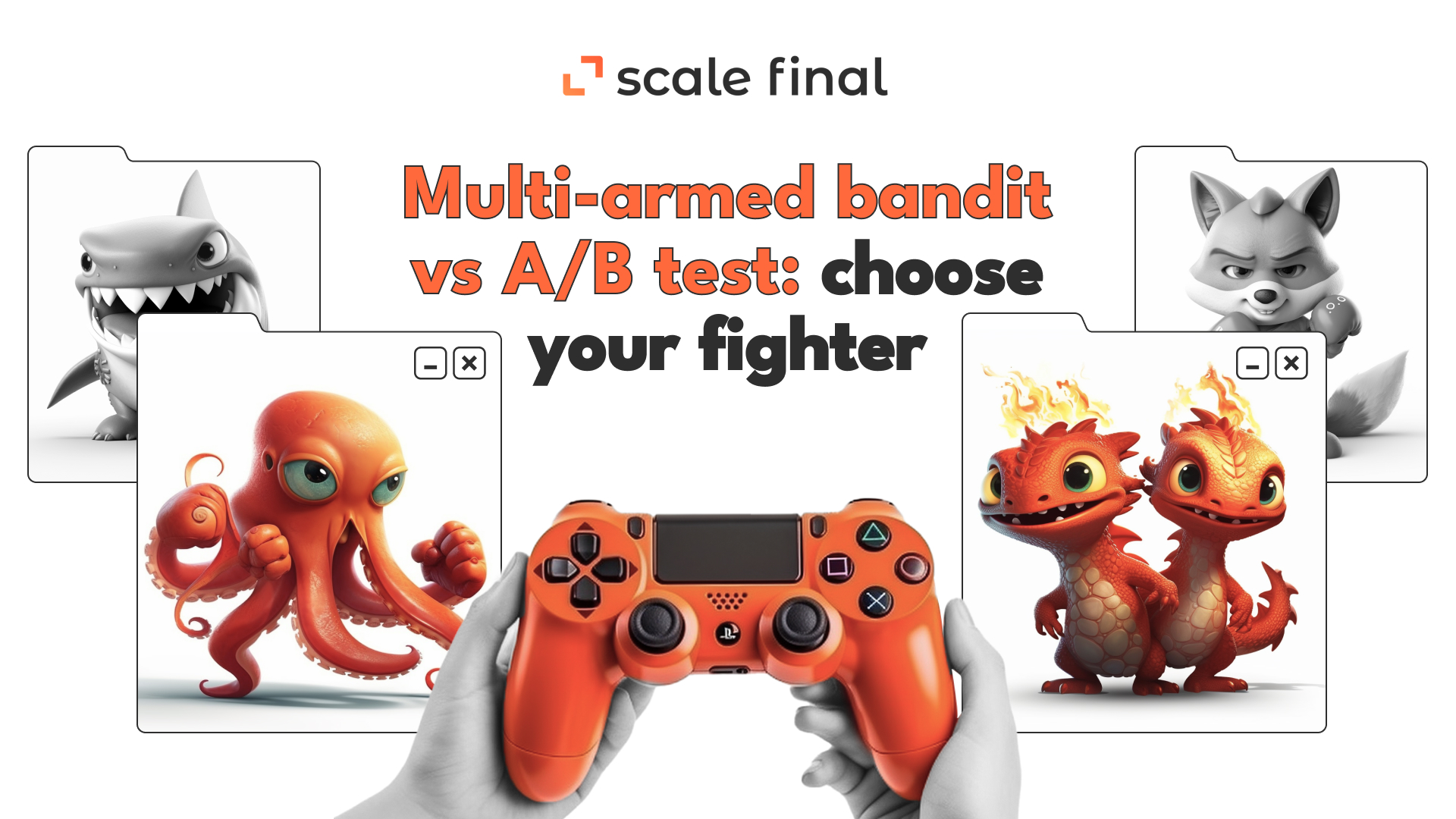
Multi-armed bandit vs A/B test: choose your fighter
May 4, 2023Optimization
If you’re stuck on choosing a color for CTA buttons, you’re not the only one. Honestly, we don’t know either. Good thing A/B testing knows. A/B testing or split testing – the most common method of conversion optimization. Here’s how it works: Traffic is distributed among 2 versions of your digital property. 50% of the traffic goes to the control version and 50% to the challenger version. This continues until the there’s enough data to decide which version is more efficient. Two problems stand out in the application of this method: Missed a detailed explanation of the A/B testing? Learn more in CRO From Scratch. Part 2. For we’re about to change the percpective now, and tell you about the multi-armed bandit testing. The difference between the multi-armed bandit algorithm and A/B testing is how the experiment is split between the exploration phase (getting enough results to make a decision) and the exploit phase (redistributing traffic). In split-testing, traffic is studied first and then redistributed to the only effective version: Multi-arm bandit solves the resource allocation dilemma between explore and exploit phases in a different way. Instead of two separate periods, it runs fluidly. Bandit testing is adaptive and allows you to simultaneously study and dynamically allocate traffic based on the data obtained: So bandit testing minimizes the cost and the difference between what you really get and what you could have gotten if you had chosen the best option at each stage. Why the multi-armed bandit test minimizes costs? Running A/B tests for different versions of your digital property is expensive. You need to buy traffic for Apple Search Ads, Facebook Ads, and Google Ads to get a sufficient number of users for reliable results. Of course, sometimes cutting corners is not an option. If you make poor decisions in the design or pre-launch phase of your product development, it can turn into a disaster. However, some things require quick results and you can tolerate uncertainty. For example, running experiments before you launch a seasonal promotion or limited-time event. When to use multi-armed bandits? Bandit algorithms are suitable for short-term testing for obvious reasons. If A/B tests were used, there would be no time to apply the data obtained. Bandits allow you to change the course of the tests based on the results in real time. I.e. traffic directs to the best version faster. We recommend to use them when time resources are limited for both explore and exploit phases. Short-term testing Headlines Headlines are the best objects for bandit algorithms. Why apply the classic split test to headlines if, by the time you figure out which option is best, the actual time for that headline has already passed? News has a short life cycle, and bandit algorithms will quickly figure out which headline is more effective. Short-term campaigns and promotions Similar to headlines, you lose a lot if you prefer A/B testing and your campaign only runs for a week. You obviously don’t want to experiment with half your traffic – by the time you get reliable results, the campaign will expire, and there won’t be time to use the successful options. Long-term testing Surprisingly, bandit tests are also effective in the long term and for continuous testing. Set it and forget it (large-scale automation) Since bandit algorithms redirect traffic to more efficient versions, you get a minimal-risk solution for long-term optimization. If you’re wondering how to decide in which order to display screenshots on your app’s product page, a multi-armed bandit test can make things very simple. Just automate the task and let it work. Targeting Another example is targeting, which is optimal for displaying specific content and ads in custom apps. The contextual bandit algorithm helps you avoid the typical mistakes with audience heterogeneity. Bandit algorithm solves this problem by applying the targeting rules derived from research to a general segment of users, while continuing to look for different rules for less common users. Conclusion Overall, multi-armed bandit testing can be a powerful tool for marketers to optimize their strategies and improve their ROI, but it requires careful planning and execution to be effective. For example, multi-arm bandit tests are more efficient for early-stage startups with insufficient user traffic because they require a smaller sample size and provide faster results than A/B tests. In addition, bandit algorithms can quickly determine the winner when testing multiple variants. Unlike A/B testing, which can only test two groups at a time, multi-armed bandit testing can test four to eight variants simultaneously. In some cases, A/B testing is still preferable, such as when testing a new feature or design where less information is available in advance about how users will respond. Ultimately, the decision between multi-arm bandit testing and A/B testing depends on the specific goals and constraints of the marketing campaign, as well as available resources and expertise.
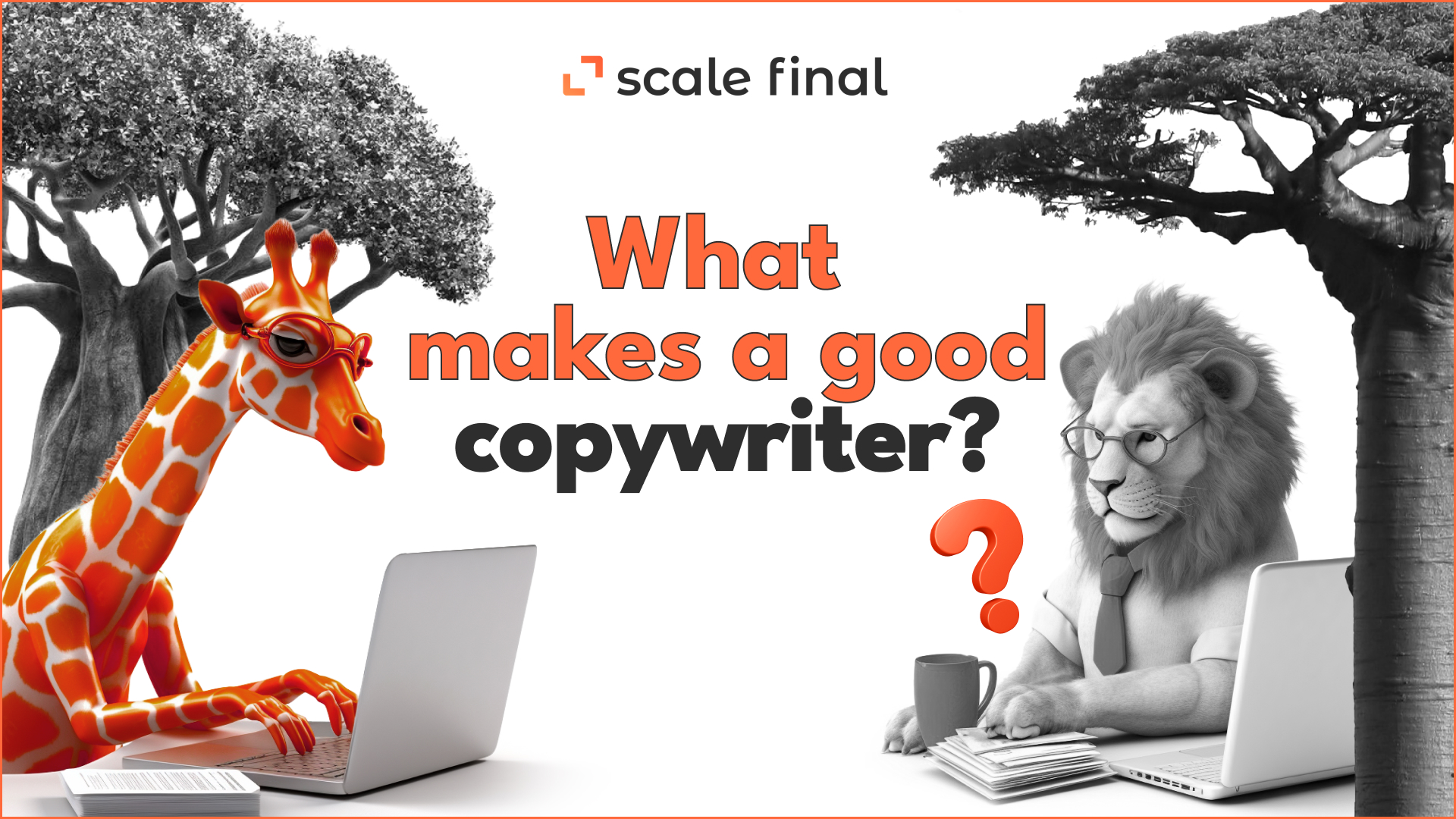
What makes a good copywriter?
April 28, 2023Content Marketing
Copywriting isn’t just about getting people to buy your products. Nor is it just about imparting knowledge. First of all, as with all writing, it’s about the text itself. It’s can be as powerful as if it were a book you want to share with your loved ones. There are some tips on how to craft content that will persuade your users. Or tips on how to optimize it so you rank better in the SERPs. What’s missing from all those tips is the text itself. The heart, in other words. Today we’re focusing on creating articles that will be shared and stand the test of time. Remember that there are tricks, but no amount of advertisement will boost content that doesn’t share real value. Write for your customer, not the algorithm In a blog post Skilled Copywriter VS Machine: Why Chat GPT Won’t Be Able to Replace True Professionals? we named things that generative AI lacks. Empathy, understanding consumer behavior, and the right tone of voice. But that doesn’t mean AI copywriter can’t exist. It’s just about creating a great prompt; you’ll end up with the text you wanted. You’ll spend some time on it, but once the prompt is done, you can use it infinitely. What’s the catch? The same as always. Thinking in terms of quantity instead of quality. Sure, you’ll make your profit, but it won’t last. The standout content is created by a thoughtful person. Ask yourself a question. Do you really want more over depth? It’s easy to get lost in the pursuit of profit and begin to perceive your customers, real people, as numbers, clicks, leads, etc. Set your goal straight It may be an unpopular opinion here. We aren’t robots. It’s good to publish long texts every day, but are you really able too? Meaningful writing takes time. Here, too, you can use AI. But think for yourself: Do you like reading posts with nothing underneath? If you try too hard, you’ll rush them. You don’t give them enough mental energy. And as a result is that no one needs your text because they can’t feel anything. You figure out how long you need to write something really great. Something you read and think, “Did I write that?” If you think that, you’ve achieved your goal. Sure, there are some exceptions, but that doesn’t mean you shouldn’t try this approach with them. Personalize your writing You should also have a clear goal and plan in mind. For your text to mean something, you need to understand what your readers will take away from it. Answer these three questions: These are selfless questions. And that’s what makes your text so special. This content will be well received and shared by your audience. The purpose of your text can be anything. You can be a copywriter at an agency, have your own brand, work in the entertainment industry, or be a blog writer. Building a loyal readership takes time. Put your readers first and create content that meets their needs, you’ll stand the test of time. That was the part about the heart of your text. The SEO optimization is its skeleton. You need to meet the requirements of search engine robots. There is no constraint. You can be truthful and customer-oriented while following the rules of the game. More tips on SEO content here: How to rank #1 in search results: a сomprehensive guide
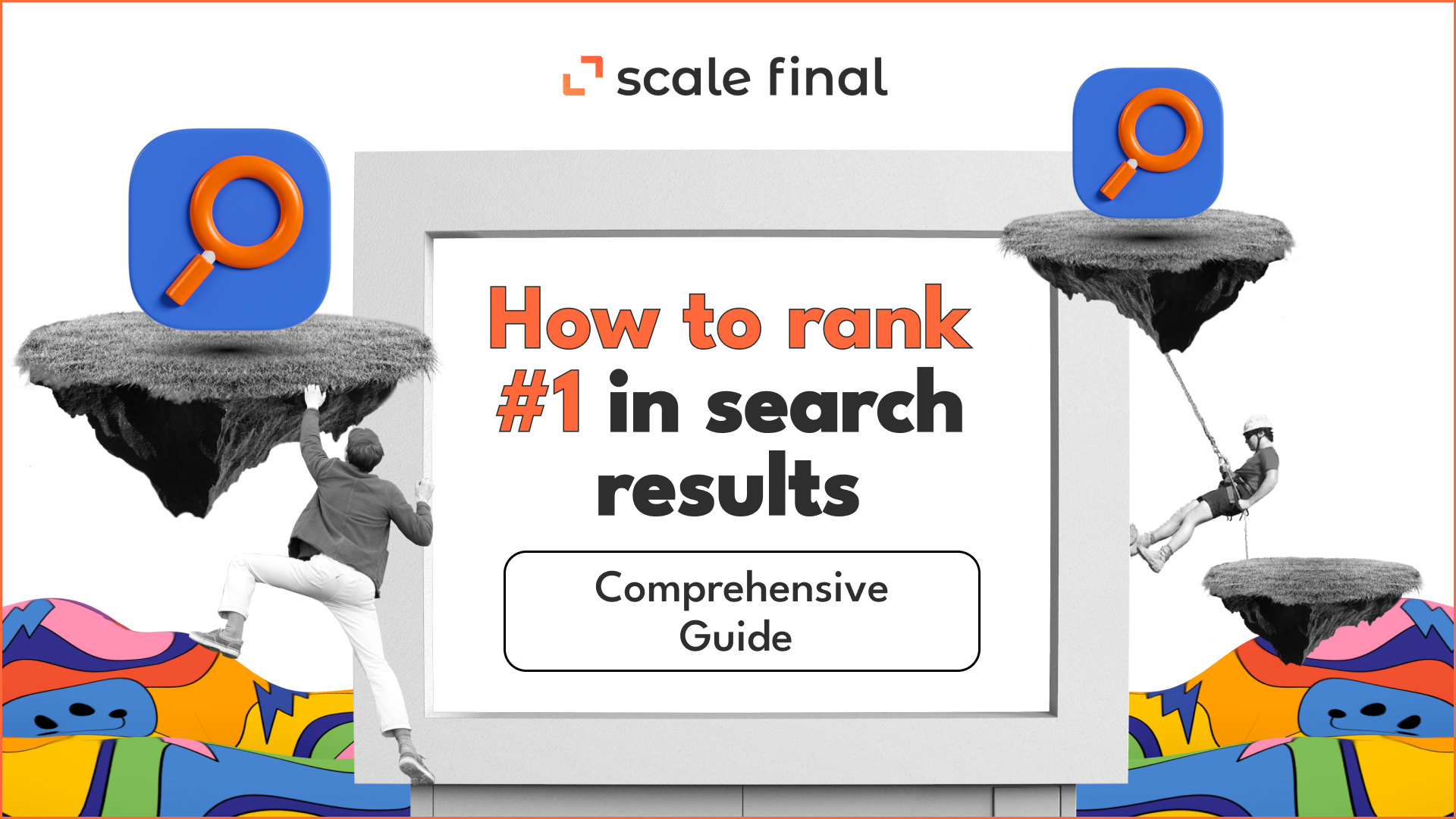
How to rank #1 in search results: a сomprehensive guide
April 25, 2023SEO
The position of a website in search results has a great impact on the number of leads. The higher up the page is, the more potential customers will see and visit it. Therefore, more will also buy the product. In a previous post, we presented examples of website promotion opportunities, such as paid search ads. Read the full post: Drive Traffic to Your Landing Pages like a Boss This text is about website promotion through SEO. There are 2 ways to bring the site to the top of search results: Google doesn’t give an exact answer about what can influence the position in search results. Search engines often change their algorithms. The robots evaluate a variety of factors. Some have more influence than others. With over seven years of experience in SEO, our ScaleFinal team has a lot of experience with how search algorithms work. The most important factors are considered: Content factors Keywords and LSI words Not only users but also search robots read the texts on your website. The algorithms evaluate how the text matches the user’s search query. The more it matches, the higher the page is in the search results. If the text has few keywords, the robot will consider your page as not relevant. You’ll not rank high. Too many keywords are also bad. Robots may classify the article as spam. Rule 1: Publish useful and quality content for your target audience. Insert keywords organically into your content. Rule 2: About content. To help robots understand the content, add LSI (Latent Semantic Indexing) words to your keywords. That are terms that are related to the keywords. For example, LSI words for “pancake”: Irrelevant content You can’t just create a website, write SEO text and leave it. It should be optimized regularly, or you’ll lose your top search positions. 1. Blank text isn’t an option, either. Add images, videos, and so on. Read more about the importance of different types of content: Neuromarketing is gold? 2. Update the information if it’s outdated. If the site is already at the top, then your users already find the content useful. That’s why you shouldn’t touch the old content but add new ones. Advertising on the site It’s in the best interest of search engines to provide users with a pleasant user experience. Therefore, everything that can be unpleasant for the user is taken into account. Full screen pop-up banners and advertisements spoil the experience. As a result, the user doesn’t stay and leaves. There are some pop-up exceptions: Behavioral factors If a user has opened your site, browsed it and then returns to search, this is a “bounce“. For search engine algorithms, this means that there is no relevant information on the page. If the bounce rate is high, the site goes down in the search results. On the other hand, the user may find the info and go to another site to compare prices. Therefore, “click-through” and “scroll depth” are considered in addition to bounce rates. Click-through length is the time the user spends on the website after clicking through from the search. Scroll depth is how deep the user went into your page. For example, clicks can count to different sections of your site: “Catalog”, “Services”, “about us”. The exception is one-page sites. Search robot understands that your site has only one page, so this factor isn’t taken into account by the system. In general, the more and deeper the interaction with the site, the better. This is a signal for the search engine robots that the content is interesting, so they’ll rank your site higher. If the user went to the site and didn’t come back, it’s not a horror story, it’s a happy ending. It means that users found what they needed. In other words, made the “final click”. This kind of thing that search engines encourage. Technical factors Device adaptation About 65% of the world’s Internet surfing is on mobile devices. That is why search engines also bring up sites that are easy to sit on from both PCs and phones. Search engines don’t like websites without a mobile version. The desktop version of the website is extremely inconvenient to use on mobile. The user will close the page and go to another page, which will lead to a bounce. Website Load Speed and Clean Code The ranking is influenced by the Time To First Byte. TTFB is the time between the browser requesting a page and when it receives the first byte of information from the server. Only TTFB is considered by search engines. The loading speed of the website after the first byte has no direct influence on the algorithms. But it has an indirect effect. Slow loading speed annoys everyone. Clean code and the absence of large CSS and JS blocks are also noticed by robots. A clean code speeds up the loading speed of the website. Clean code can improve search engines’ understanding of a website’s content. SSL certificate Secure Socket Layer (SSL) is a certificate that allows a website to switch from HTTP to HTTPS, which is more secure. Google is protecting users, so suspicious and unsafe websites are downgraded in search. Domain age The longer it exists, the more trustworthy it is. New sites are checked for reliability and technical correctness. On average, this takes a few weeks to two months. A high volume of visitors, regardless of where they come from, can cause the site to get out of the testing phase faster. Also, buying an old domain is no guarantee that you’ll make it to the top. For example, the old domain may have a bad history, or the new site may not match that of the old one. In this case, the algorithms don’t take into account the age of the domain. It will be checked like a newly created site. Commercial Factors Prices on the site Search engines love sites with prices. The user expects complete information about the product: from its

5 worst tips to lose a client
April 19, 2023Marketing
The simple truth about our customers is that they expect us to meet their expectations. Those are the things we put on this list. On the surface, these things were actually made to please.
Things like bombarding customers with daily emails and notifications, a clumsy and unclear loyalty system, and constant discounts are things that will surely make them leave us.
We won’t deal with things that are clearly a no-no, like unprofessionalism, lack of support, shaggy products, and overall poor customer service.
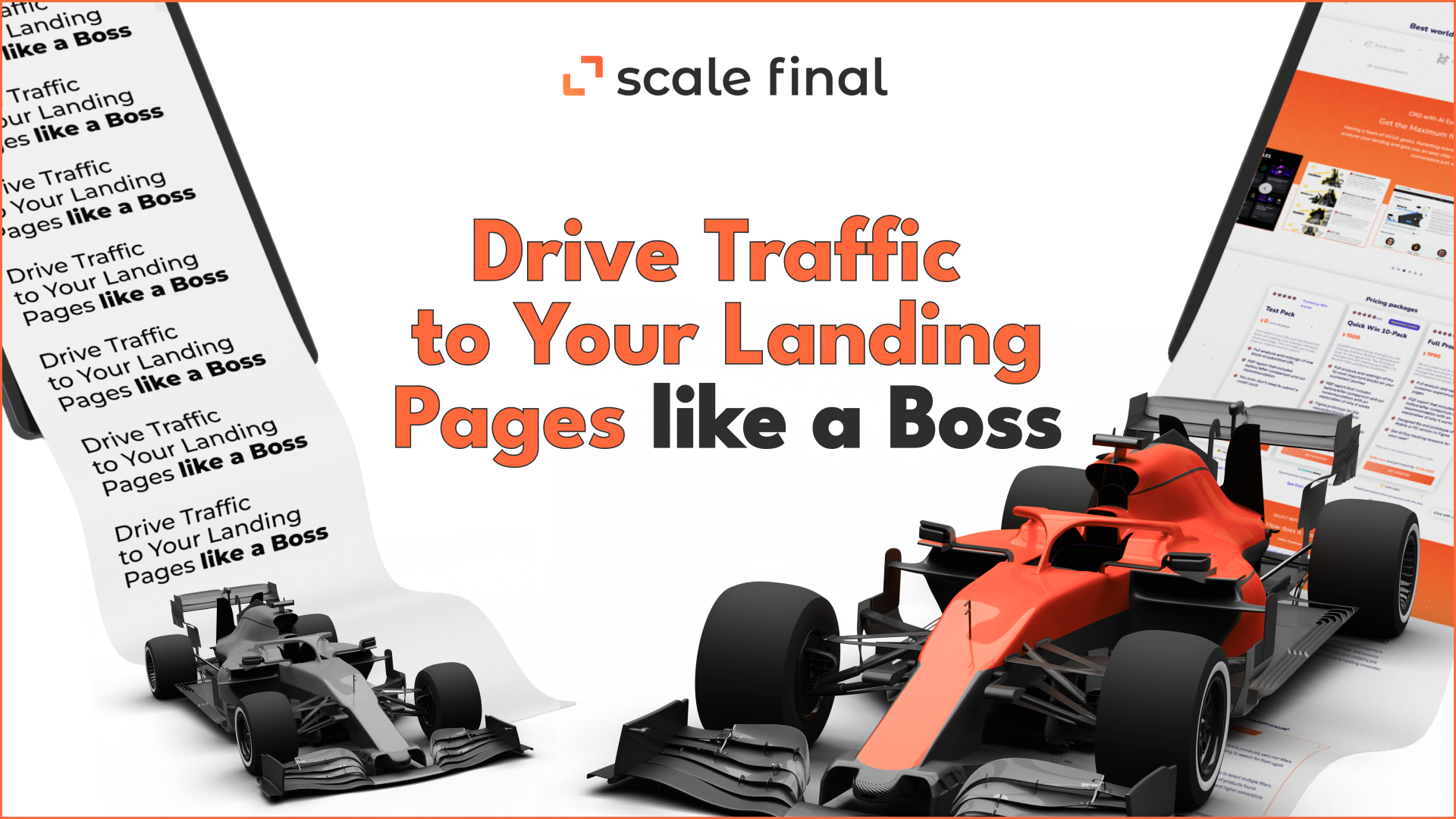
Drive traffic to your landing pages like a boss
April 13, 2023Marketing
There’s no point in a landing page if your potential customers do not see it. In Landing Page That Convert: The Winning Formula, we gave you a step-by-step guide on creating such a page. In short: product pitch, clear copy, trustworthy social proofs, and powerful CTAs – all well thought out.
What we missed is how you drive traffic to your website landing pages. That’s what we’re going to talk about today.
After implementing the formula, you need to consider where your target audience is spending time online. Even if you already know your target audience pretty well, you should consider this guide as a help to increase your reach.

Landing page that converts: The winning formula
April 11, 2023Optimization
The perfect page structure is the one that sells and where people can decide quickly: they want your product.
by Denys Kurko

Guest posts: A win-win marketing tactic
April 6, 2023SEO
Guest posts are a great tool for both your brand and website performance. It helps you attract customers and increase your rank and traffic.

5 brands leveraging AI in marketing
April 4, 2023Marketing
These brands use artificial intelligence and machine learning technologies as an integral part of their marketing strategy.
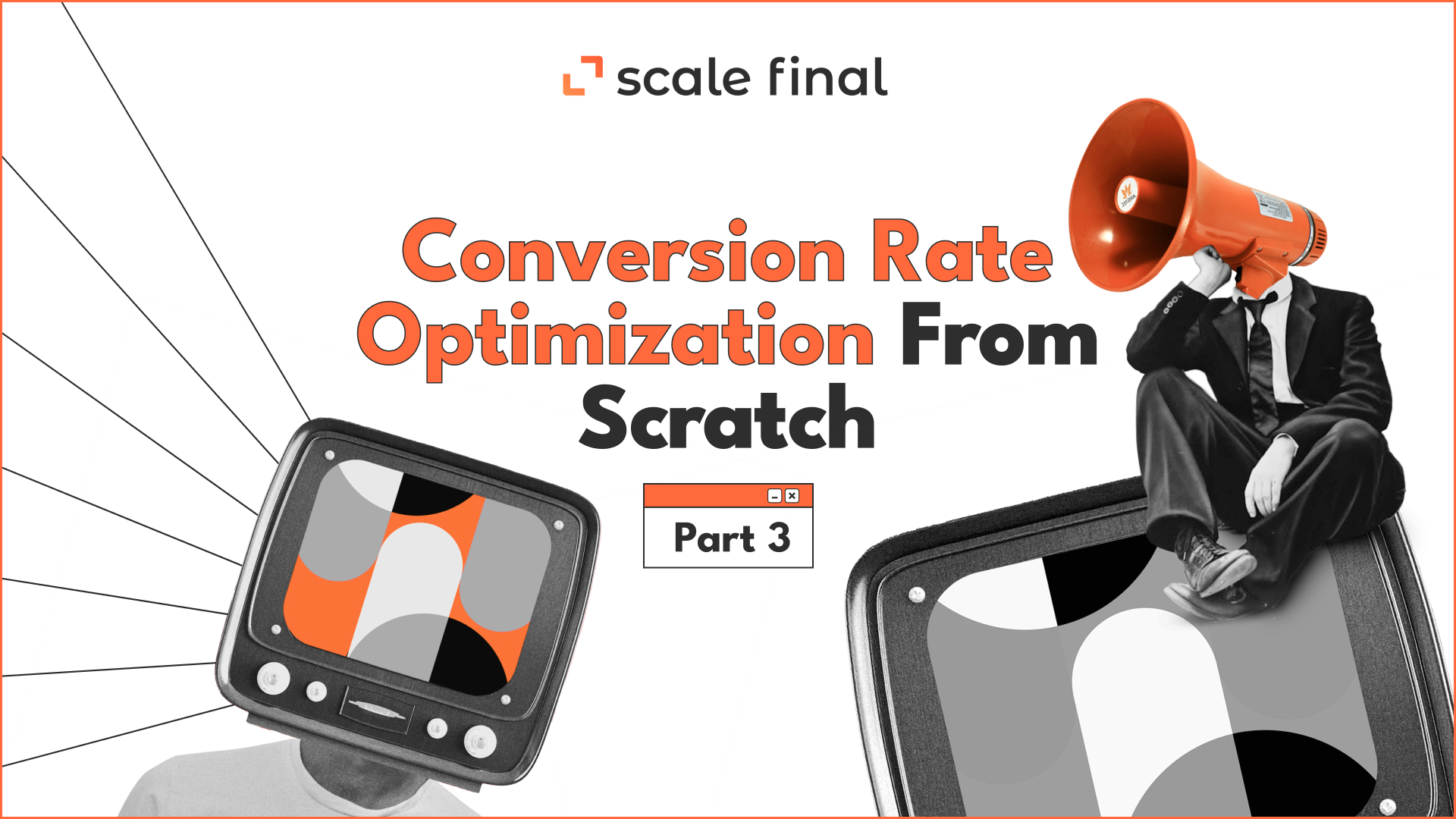
CRO from scratch. Part 3.
March 30, 2023Optimization
CRO From Scratch. Part 3 is advice on how to create, organize and communicate your product to increase conversion rates
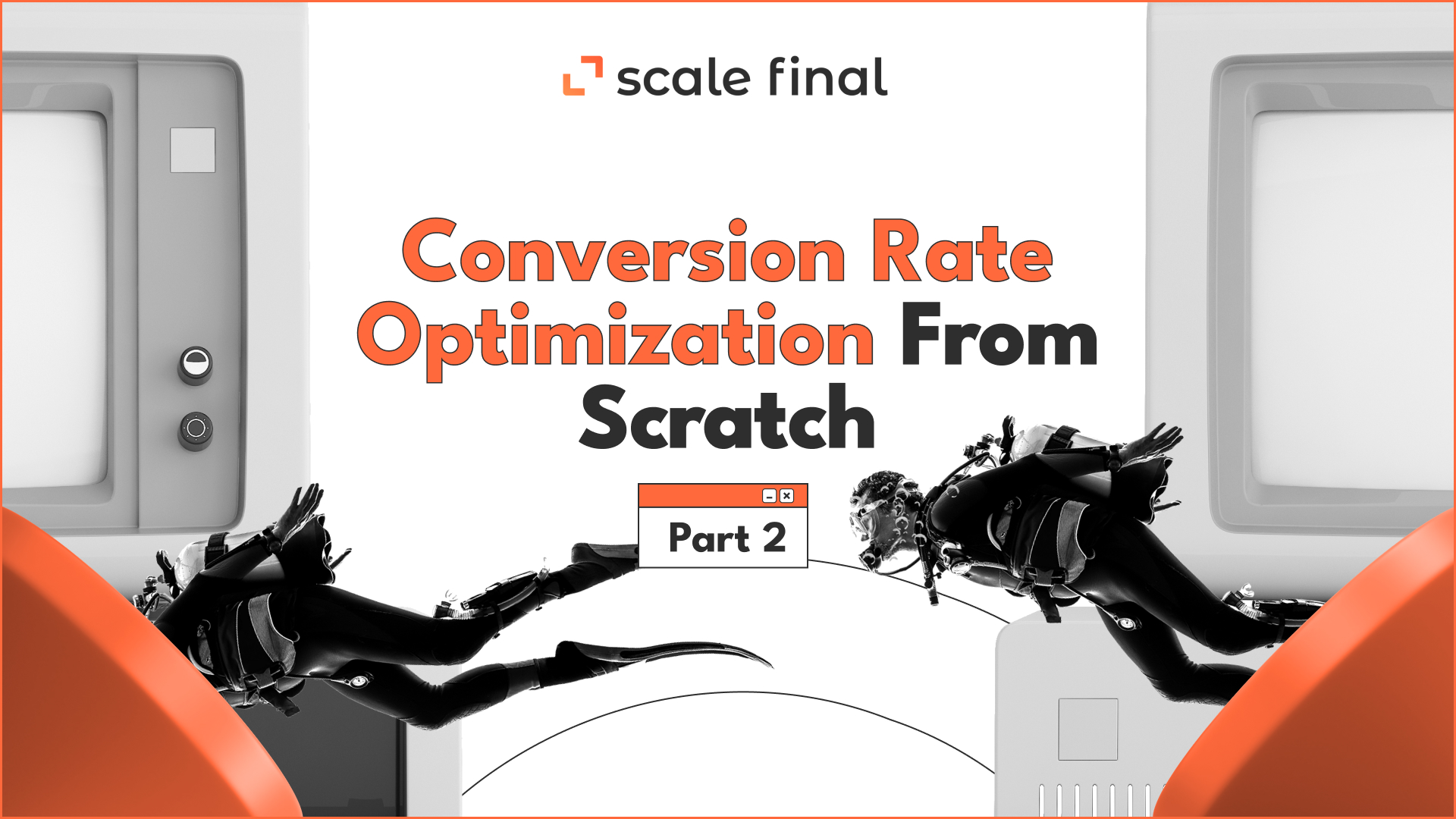
CRO from scratch. Part 2.
March 28, 2023Optimization
CRO From Scratch. Part 2 is an insightful story about A/B testing, an important part of your CRO journey. Prove your hypotheses with testing.

CRO from scratch. Part 1.
March 23, 2023Optimization
A beginner’s guide to how and why you need to optimize your conversion rate to achieve your business goals. Part 1.

Neuromarketing is gold?
March 21, 2023Marketing
Today we’ll discuss why it’s important to collect data and leverage users’ emotional responses to your product

Multi-armed bandit vs A/B test: choose your fighter
May 4, 2023Optimization
If you’re stuck on choosing a color for CTA buttons, you’re not the only one. Honestly, we don’t know either. Good thing A/B testing knows. A/B testing or split testing – the most common method of conversion optimization. Here’s how it works: Traffic is distributed among 2 versions of your digital property. 50% of the traffic goes to the control version and 50% to the challenger version. This continues until the there’s enough data to decide which version is more efficient. Two problems stand out in the application of this method: Missed a detailed explanation of the A/B testing? Learn more in CRO From Scratch. Part 2. For we’re about to change the percpective now, and tell you about the multi-armed bandit testing. The difference between the multi-armed bandit algorithm and A/B testing is how the experiment is split between the exploration phase (getting enough results to make a decision) and the exploit phase (redistributing traffic). In split-testing, traffic is studied first and then redistributed to the only effective version: Multi-arm bandit solves the resource allocation dilemma between explore and exploit phases in a different way. Instead of two separate periods, it runs fluidly. Bandit testing is adaptive and allows you to simultaneously study and dynamically allocate traffic based on the data obtained: So bandit testing minimizes the cost and the difference between what you really get and what you could have gotten if you had chosen the best option at each stage. Why the multi-armed bandit test minimizes costs? Running A/B tests for different versions of your digital property is expensive. You need to buy traffic for Apple Search Ads, Facebook Ads, and Google Ads to get a sufficient number of users for reliable results. Of course, sometimes cutting corners is not an option. If you make poor decisions in the design or pre-launch phase of your product development, it can turn into a disaster. However, some things require quick results and you can tolerate uncertainty. For example, running experiments before you launch a seasonal promotion or limited-time event. When to use multi-armed bandits? Bandit algorithms are suitable for short-term testing for obvious reasons. If A/B tests were used, there would be no time to apply the data obtained. Bandits allow you to change the course of the tests based on the results in real time. I.e. traffic directs to the best version faster. We recommend to use them when time resources are limited for both explore and exploit phases. Short-term testing Headlines Headlines are the best objects for bandit algorithms. Why apply the classic split test to headlines if, by the time you figure out which option is best, the actual time for that headline has already passed? News has a short life cycle, and bandit algorithms will quickly figure out which headline is more effective. Short-term campaigns and promotions Similar to headlines, you lose a lot if you prefer A/B testing and your campaign only runs for a week. You obviously don’t want to experiment with half your traffic – by the time you get reliable results, the campaign will expire, and there won’t be time to use the successful options. Long-term testing Surprisingly, bandit tests are also effective in the long term and for continuous testing. Set it and forget it (large-scale automation) Since bandit algorithms redirect traffic to more efficient versions, you get a minimal-risk solution for long-term optimization. If you’re wondering how to decide in which order to display screenshots on your app’s product page, a multi-armed bandit test can make things very simple. Just automate the task and let it work. Targeting Another example is targeting, which is optimal for displaying specific content and ads in custom apps. The contextual bandit algorithm helps you avoid the typical mistakes with audience heterogeneity. Bandit algorithm solves this problem by applying the targeting rules derived from research to a general segment of users, while continuing to look for different rules for less common users. Conclusion Overall, multi-armed bandit testing can be a powerful tool for marketers to optimize their strategies and improve their ROI, but it requires careful planning and execution to be effective. For example, multi-arm bandit tests are more efficient for early-stage startups with insufficient user traffic because they require a smaller sample size and provide faster results than A/B tests. In addition, bandit algorithms can quickly determine the winner when testing multiple variants. Unlike A/B testing, which can only test two groups at a time, multi-armed bandit testing can test four to eight variants simultaneously. In some cases, A/B testing is still preferable, such as when testing a new feature or design where less information is available in advance about how users will respond. Ultimately, the decision between multi-arm bandit testing and A/B testing depends on the specific goals and constraints of the marketing campaign, as well as available resources and expertise.

What makes a good copywriter?
April 28, 2023Content Marketing
Copywriting isn’t just about getting people to buy your products. Nor is it just about imparting knowledge. First of all, as with all writing, it’s about the text itself. It’s can be as powerful as if it were a book you want to share with your loved ones. There are some tips on how to craft content that will persuade your users. Or tips on how to optimize it so you rank better in the SERPs. What’s missing from all those tips is the text itself. The heart, in other words. Today we’re focusing on creating articles that will be shared and stand the test of time. Remember that there are tricks, but no amount of advertisement will boost content that doesn’t share real value. Write for your customer, not the algorithm In a blog post Skilled Copywriter VS Machine: Why Chat GPT Won’t Be Able to Replace True Professionals? we named things that generative AI lacks. Empathy, understanding consumer behavior, and the right tone of voice. But that doesn’t mean AI copywriter can’t exist. It’s just about creating a great prompt; you’ll end up with the text you wanted. You’ll spend some time on it, but once the prompt is done, you can use it infinitely. What’s the catch? The same as always. Thinking in terms of quantity instead of quality. Sure, you’ll make your profit, but it won’t last. The standout content is created by a thoughtful person. Ask yourself a question. Do you really want more over depth? It’s easy to get lost in the pursuit of profit and begin to perceive your customers, real people, as numbers, clicks, leads, etc. Set your goal straight It may be an unpopular opinion here. We aren’t robots. It’s good to publish long texts every day, but are you really able too? Meaningful writing takes time. Here, too, you can use AI. But think for yourself: Do you like reading posts with nothing underneath? If you try too hard, you’ll rush them. You don’t give them enough mental energy. And as a result is that no one needs your text because they can’t feel anything. You figure out how long you need to write something really great. Something you read and think, “Did I write that?” If you think that, you’ve achieved your goal. Sure, there are some exceptions, but that doesn’t mean you shouldn’t try this approach with them. Personalize your writing You should also have a clear goal and plan in mind. For your text to mean something, you need to understand what your readers will take away from it. Answer these three questions: These are selfless questions. And that’s what makes your text so special. This content will be well received and shared by your audience. The purpose of your text can be anything. You can be a copywriter at an agency, have your own brand, work in the entertainment industry, or be a blog writer. Building a loyal readership takes time. Put your readers first and create content that meets their needs, you’ll stand the test of time. That was the part about the heart of your text. The SEO optimization is its skeleton. You need to meet the requirements of search engine robots. There is no constraint. You can be truthful and customer-oriented while following the rules of the game. More tips on SEO content here: How to rank #1 in search results: a сomprehensive guide

How to rank #1 in search results: a сomprehensive guide
April 25, 2023SEO
The position of a website in search results has a great impact on the number of leads. The higher up the page is, the more potential customers will see and visit it. Therefore, more will also buy the product. In a previous post, we presented examples of website promotion opportunities, such as paid search ads. Read the full post: Drive Traffic to Your Landing Pages like a Boss This text is about website promotion through SEO. There are 2 ways to bring the site to the top of search results: Google doesn’t give an exact answer about what can influence the position in search results. Search engines often change their algorithms. The robots evaluate a variety of factors. Some have more influence than others. With over seven years of experience in SEO, our ScaleFinal team has a lot of experience with how search algorithms work. The most important factors are considered: Content factors Keywords and LSI words Not only users but also search robots read the texts on your website. The algorithms evaluate how the text matches the user’s search query. The more it matches, the higher the page is in the search results. If the text has few keywords, the robot will consider your page as not relevant. You’ll not rank high. Too many keywords are also bad. Robots may classify the article as spam. Rule 1: Publish useful and quality content for your target audience. Insert keywords organically into your content. Rule 2: About content. To help robots understand the content, add LSI (Latent Semantic Indexing) words to your keywords. That are terms that are related to the keywords. For example, LSI words for “pancake”: Irrelevant content You can’t just create a website, write SEO text and leave it. It should be optimized regularly, or you’ll lose your top search positions. 1. Blank text isn’t an option, either. Add images, videos, and so on. Read more about the importance of different types of content: Neuromarketing is gold? 2. Update the information if it’s outdated. If the site is already at the top, then your users already find the content useful. That’s why you shouldn’t touch the old content but add new ones. Advertising on the site It’s in the best interest of search engines to provide users with a pleasant user experience. Therefore, everything that can be unpleasant for the user is taken into account. Full screen pop-up banners and advertisements spoil the experience. As a result, the user doesn’t stay and leaves. There are some pop-up exceptions: Behavioral factors If a user has opened your site, browsed it and then returns to search, this is a “bounce“. For search engine algorithms, this means that there is no relevant information on the page. If the bounce rate is high, the site goes down in the search results. On the other hand, the user may find the info and go to another site to compare prices. Therefore, “click-through” and “scroll depth” are considered in addition to bounce rates. Click-through length is the time the user spends on the website after clicking through from the search. Scroll depth is how deep the user went into your page. For example, clicks can count to different sections of your site: “Catalog”, “Services”, “about us”. The exception is one-page sites. Search robot understands that your site has only one page, so this factor isn’t taken into account by the system. In general, the more and deeper the interaction with the site, the better. This is a signal for the search engine robots that the content is interesting, so they’ll rank your site higher. If the user went to the site and didn’t come back, it’s not a horror story, it’s a happy ending. It means that users found what they needed. In other words, made the “final click”. This kind of thing that search engines encourage. Technical factors Device adaptation About 65% of the world’s Internet surfing is on mobile devices. That is why search engines also bring up sites that are easy to sit on from both PCs and phones. Search engines don’t like websites without a mobile version. The desktop version of the website is extremely inconvenient to use on mobile. The user will close the page and go to another page, which will lead to a bounce. Website Load Speed and Clean Code The ranking is influenced by the Time To First Byte. TTFB is the time between the browser requesting a page and when it receives the first byte of information from the server. Only TTFB is considered by search engines. The loading speed of the website after the first byte has no direct influence on the algorithms. But it has an indirect effect. Slow loading speed annoys everyone. Clean code and the absence of large CSS and JS blocks are also noticed by robots. A clean code speeds up the loading speed of the website. Clean code can improve search engines’ understanding of a website’s content. SSL certificate Secure Socket Layer (SSL) is a certificate that allows a website to switch from HTTP to HTTPS, which is more secure. Google is protecting users, so suspicious and unsafe websites are downgraded in search. Domain age The longer it exists, the more trustworthy it is. New sites are checked for reliability and technical correctness. On average, this takes a few weeks to two months. A high volume of visitors, regardless of where they come from, can cause the site to get out of the testing phase faster. Also, buying an old domain is no guarantee that you’ll make it to the top. For example, the old domain may have a bad history, or the new site may not match that of the old one. In this case, the algorithms don’t take into account the age of the domain. It will be checked like a newly created site. Commercial Factors Prices on the site Search engines love sites with prices. The user expects complete information about the product: from its

5 worst tips to lose a client
April 19, 2023Marketing
The simple truth about our customers is that they expect us to meet their expectations. Those are the things we put on this list. On the surface, these things were actually made to please.
Things like bombarding customers with daily emails and notifications, a clumsy and unclear loyalty system, and constant discounts are things that will surely make them leave us.
We won’t deal with things that are clearly a no-no, like unprofessionalism, lack of support, shaggy products, and overall poor customer service.

Drive traffic to your landing pages like a boss
April 13, 2023Marketing
There’s no point in a landing page if your potential customers do not see it. In Landing Page That Convert: The Winning Formula, we gave you a step-by-step guide on creating such a page. In short: product pitch, clear copy, trustworthy social proofs, and powerful CTAs – all well thought out.
What we missed is how you drive traffic to your website landing pages. That’s what we’re going to talk about today.
After implementing the formula, you need to consider where your target audience is spending time online. Even if you already know your target audience pretty well, you should consider this guide as a help to increase your reach.

Landing page that converts: The winning formula
April 11, 2023Optimization
The perfect page structure is the one that sells and where people can decide quickly: they want your product.
by Denys Kurko

Guest posts: A win-win marketing tactic
April 6, 2023SEO
Guest posts are a great tool for both your brand and website performance. It helps you attract customers and increase your rank and traffic.

5 brands leveraging AI in marketing
April 4, 2023Marketing
These brands use artificial intelligence and machine learning technologies as an integral part of their marketing strategy.

CRO from scratch. Part 3.
March 30, 2023Optimization
CRO From Scratch. Part 3 is advice on how to create, organize and communicate your product to increase conversion rates

CRO from scratch. Part 2.
March 28, 2023Optimization
CRO From Scratch. Part 2 is an insightful story about A/B testing, an important part of your CRO journey. Prove your hypotheses with testing.

CRO from scratch. Part 1.
March 23, 2023Optimization
A beginner’s guide to how and why you need to optimize your conversion rate to achieve your business goals. Part 1.

Neuromarketing is gold?
March 21, 2023Marketing
Today we’ll discuss why it’s important to collect data and leverage users’ emotional responses to your product



